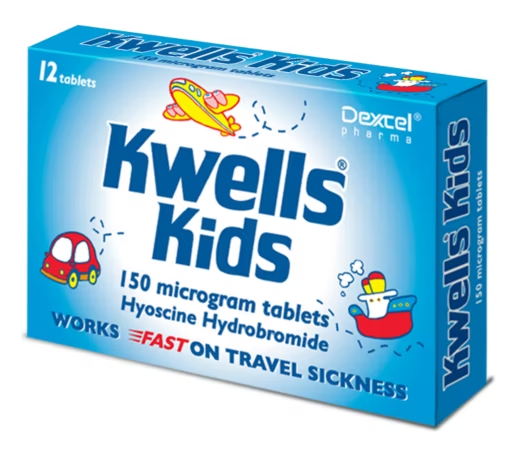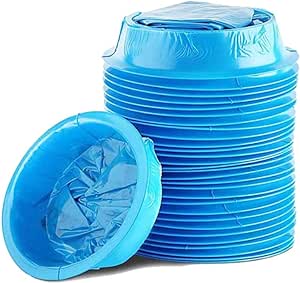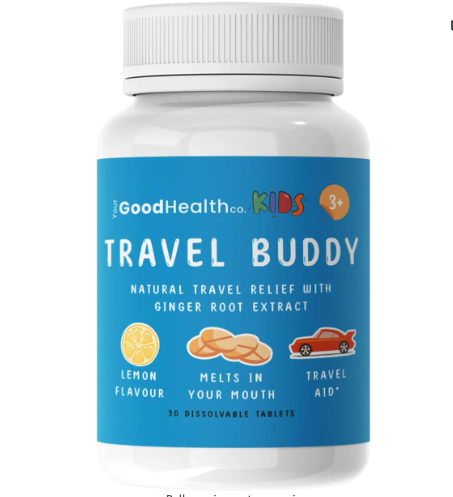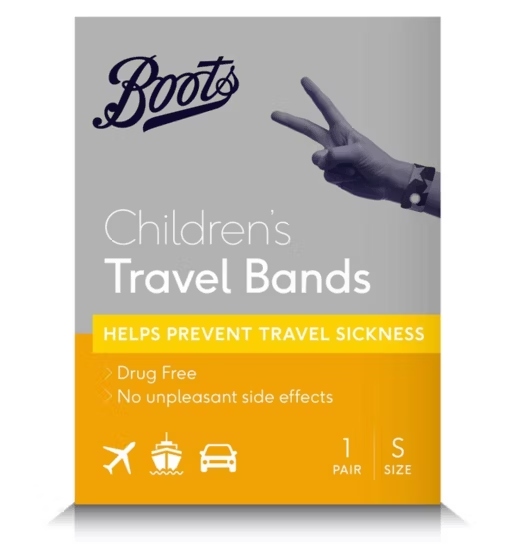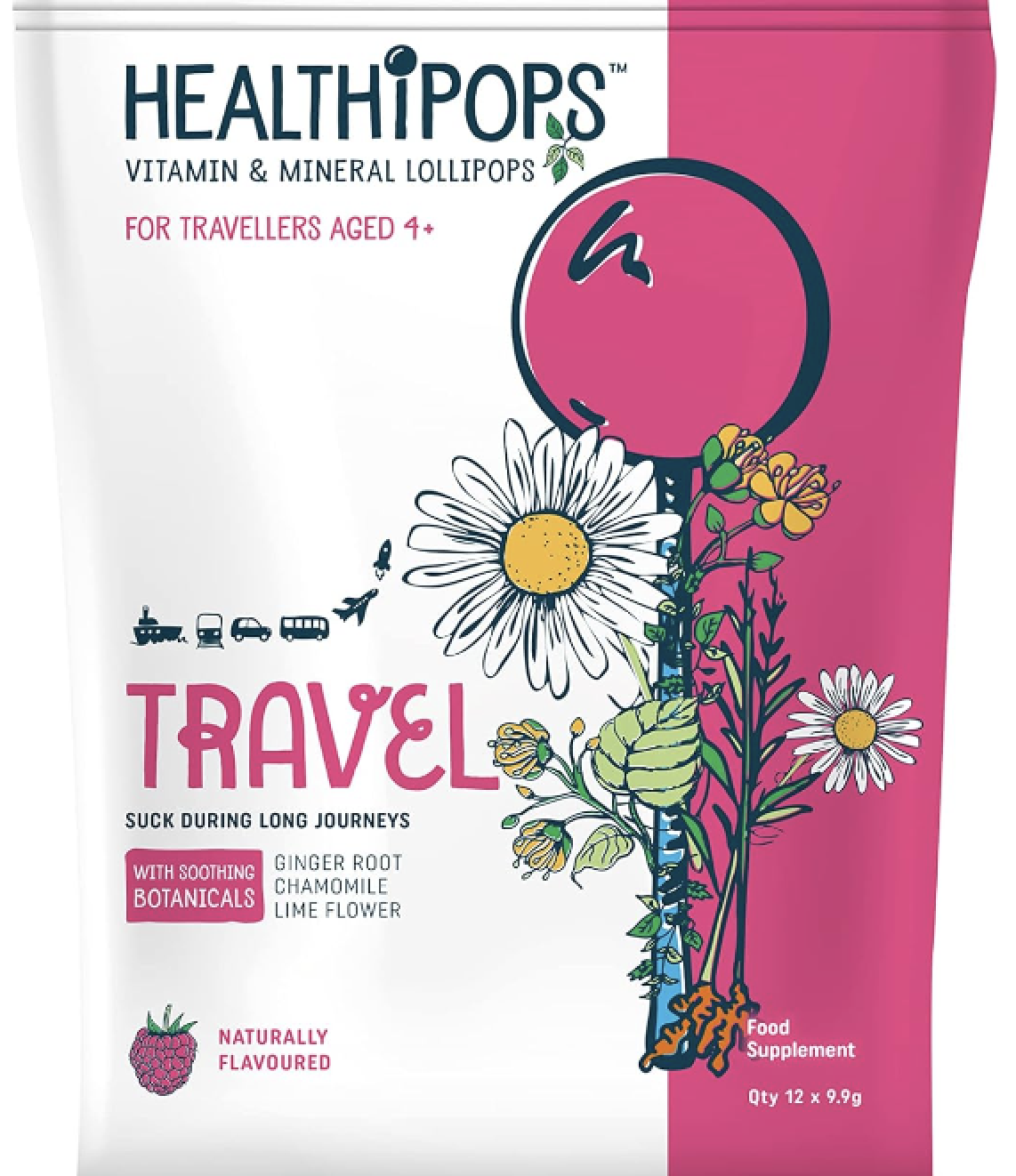How to prevent and treat car sickness in children
Car sickness affects a lot of children, but there are ways to help manage it
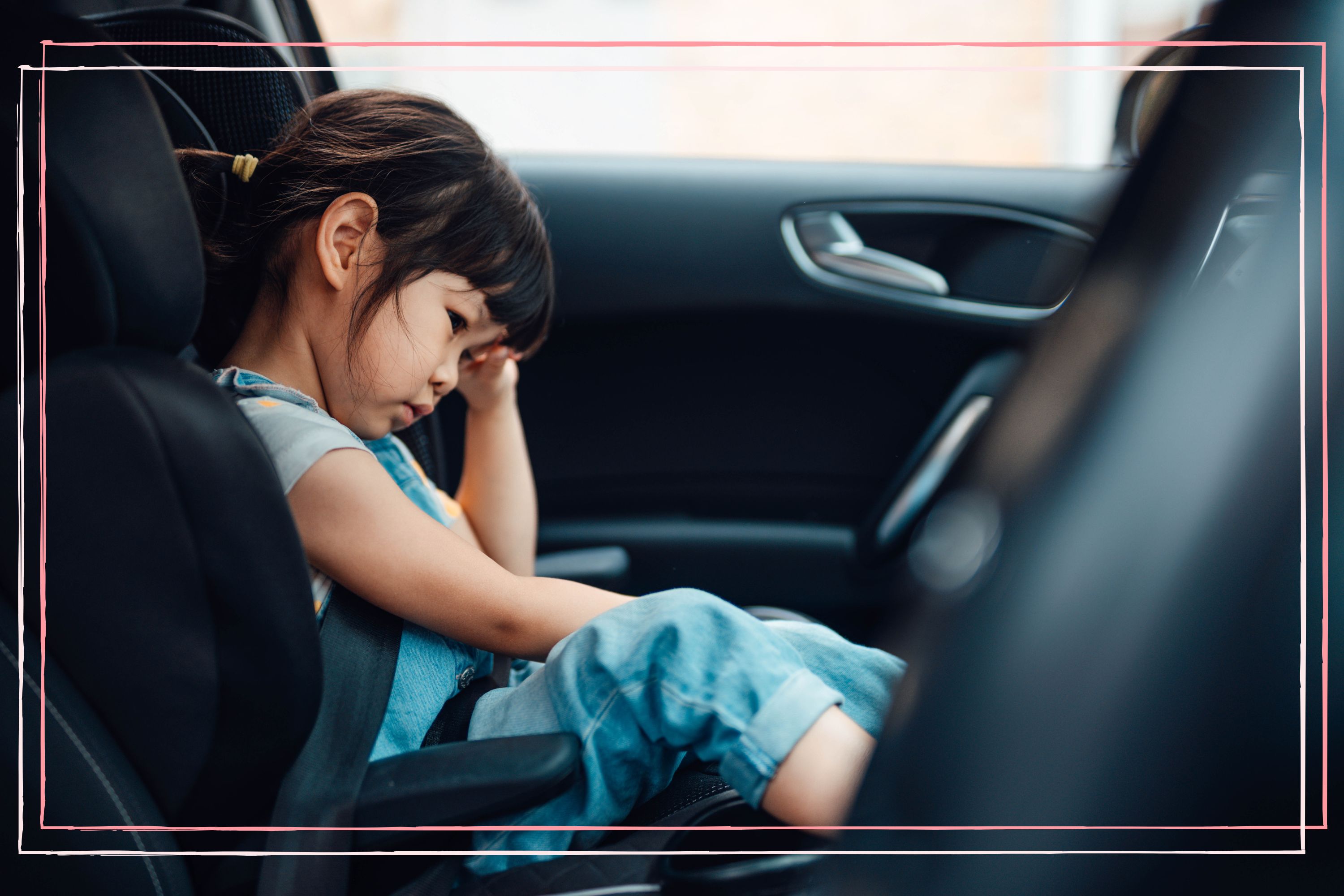
Travelling in the car with your infant or child brings with it a whole set of new challenges. Snacks, distractions and car games played on repeat are just some of the things you need to be prepared for. But one thing you can’t always predict is whether your child is going to be affected by car or motion sickness.
Car sickness can be really miserable for both a child and their parents as it can make family road trips and even short journeys quite stressful and upsetting. Many of us rely on cars to get to and from places on a regular basis so knowing that it makes your little one unwell can be really tough. It can also affect children when they travel on a boat, plane, train or fairground ride too. The most common ages for car sickness are between two and 12 but many children do seem to grow out of it which will be a relief for parents.
As stated by the NHS, the main symptoms of car sickness are nausea and vomiting but there are other signs to look out for which your child might be complaining about. They might be experiencing dizziness, a headache, feeling sweaty, or going cold, pale and clammy.
Car sickness symptoms can come on quite quickly once you start moving. But, thankfully they can also ease very fast after stopping - and there are some tried and tested ways of preventing and easing nausea, as outlined in this article.
How to prevent car sickness in children
Before you travel
- Dr Claire Merrifield recommends packing water and light snacks for the journey and avoiding eating a heavy meal before travelling.
- You should also choose a time of day to travel when your child is well-rested and relaxed. It might help to coincide the journey with their bed or nap time so they can close their eyes and sleep for part of it.
- It’s always good to prepare a sickness bag to keep in the car in case of vomiting. This can include items like spare clothes, something to catch the sick in such as a bag or bucket and wipes or towels
- There are some types of medication that you can give your child before a journey to settle their stomach, but always check with your GP or pharmacist first.
- Dr Merrifield says: “Acupressure bands work for some children and there is absolutely no harm to using them so this is a great starting point.”
- Plan for regular breaks - When planning your trip, allow some extra time for regular stops which will give your child an opportunity to get some fresh air, walk around and have small sips of cold water.
While travelling
- Open the windows - extra ventilation can help ease the symptoms of travel sickness children.
- Have the child sit in the middle or front seat - "For older children, changing the seating position can help to ease car sickness symptoms. Let them sit in the front seat, or middle (if age-appropriate) where they can see the road ahead,” says Dr Merrifield.
- Tell kids to look ahead - Dr Merrifield adds, “You could also encourage them to look at distant objects or the horizon, rather than inside the car. Focusing their vision on a still object or landmark outside the car can often help.”
- Consider headrest screens - Parenting expert Kirsty Ketley : “Ideally kids need to be looking ahead, so using screens with a movie on, attached to the headrest in front, can be helpful. Avoid having toys and books in the car which can make it worse and get them to focus on looking out the window.”
- Try audiobooks - Choose different types of entertainment such as audio books or games you can play which involve speaking to each other instead, such as I-Spy.
- Breathing techniques - inhaling through the nose and exhaling out of the mouth can help ease the nausea and keep a child relaxed. Closing their eyes and slowing down the breath can also make the trip more manageable. And research backs this up, with one study in the Journal of Aerospace Medicine and Human Performance found that breathing deeply from the belly (known as diaphragmatic breathing) was effective at reducing the sensation of motion sickness.
- Offer water and dry snacks - If they are feeling nauseous during the trip, give them small sips of water and small, dry snacks which won’t upset their stomach further.
Car sickness products and remedies
Luckily, because car sickness is common there are some remedies and medications you can try which might help your child feel better. Car sickness can be really upsetting for children, and may lead to them feeling reluctant about going in the car so it’s worth testing some of these products to see if they can make a difference.
- Ginger - Consuming ginger is a tried-and-tested natural remedy for treating nausea, and is an effective natural remedy for travel sickness too. Abbas Kanani lead pharmacist at Chemist Click Online Pharmacy, explains: "It aids digestion and saliva flow, and its anti-inflammatory properties support the release of hormones that calm your body and reduce nausea." Gingers sweets, (Amazon, £9.50) lollipops and biscuits may help.
- Kwells Kids dissolvable tablets (Amazon, £3.15) - These come in tablet form, which can be sucked or chewed around 20 to 30 minutes before your journey. Available at these are for children aged 4+. Dr Merrifield advises that you always read the label first as some medications work best if taken an hour or two before you set off. They can also cause drowsiness so are best used on longer journeys or if you’re not doing anything too energetic once you arrive.
- Acupressure bands - These work on the pressure points in our wrists to stop feelings of nausea. Mum-of-two Lindsay, 33, says she has found the acupressure bands, also known as sea bands, work for her daughter’s sickness. These bands have a small button which presses on the acupressure point and relieves the symptoms. Lindsay says: “I struggled to get my daughter to take the tablets so we tried the bands and they’ve been great. She also wears them on school trips and they’ve worked wonders.” Available at Amazon, for kids aged 3+, Boots also sell options for 2 to 12 years olds.
- Travel sickness patches - these can be stuck to the skin to ease symptoms can be used by children aged 10 and over. Buy 36 patches for £5 at Amazon.
- Aromatherapy oils such as ginger, mint and lavender may also relieve nausea. You could put some on your child’s wrists or use it in a diffuser within the car. Always read labels carefully, and dilute if necessary. The Authentic Oil Co's motion sickness blend is available on Amazon, £4.
Suggested products
How to comfort your child when they have car sickness
It’s horrible seeing your child sad and uncomfortable and as parents we always want to do everything we can to make sure they’re happy and healthy. While car sickness can be unpredictable, you can learn to recognise the symptoms we’ve mentioned above.
Toddlers may not be able to vocalise how they’re feeling but children aged three or above should be able to tell you if their tummy hurts which means you can take action to help them. Always encourage them to tell you how they’re feeling and don’t let them feel embarrassed or ashamed about having car sickness.
Parenting advice, hot topics, best buys and family finance tips delivered straight to your inbox.
Sitting in the back seat next to your child can help comfort them, as well as taking lots of breaks and making the journey as short as possible by planning your route and setting off at a time when the traffic might be lighter.
As we said at the start of this article, many children grow out of car sickness or become more used to being on long journeys. If you suffered with it as a child you can reassure them that you know how it feels and that you understand how unpleasant it is. But you can also tell them that it won’t be forever, and will hopefully get better.
Why do children get car sick?
It’s not known exactly why some children are affected by car sickness while others are fine, but there are various factors that can contribute. A 2015 study published in Human Molecular Genetics states that around one in three people are susceptible to motion sickness. The study also says that women and young children are at more risk than men.
Often, it's a miscommunication between their eyes and brain, because their brain is expecting a certain image, yet their eyes relay a different one. It may also be caused by increased sensitivity in the inner ear. GP Dr Aarthi Sinha explains that the inner key plays a key role in our balance and consists of crystals moving in certain positions within tubes of fluid. “These crystals send signals to our brain, so we know the position of our bodies and have a sense of balance,” she says. “The motion from vehicles when we travel, like bumps or going up and down, causes these crystals to move and send signals to our brain that do not match what our eyes see. This mismatch can cause dizziness, sickness and make you feel unwell.”
It can be triggered by all kinds of repeated movements, such as going over bumps in the road. If a child is too small to properly be able to see out the window at the world passing by - their inner ear can detect motion, but their eyes and body can’t.
Some children may also be more genetically disposed to having car sickness due to the way their eyes and ears have developed. Bethann Hromatka, one of the authors of the 2015 study mentioned above, said in 2015: “It’s estimated that up to 70 percent of a person’s risk for motion sickness is due to genetics, but up until now the genetics of motion sickness was poorly understood.
“We’ve identified 35 genetic associations with motion sickness that fall into a few different biological categories. Some genetic variants are in or near genes involved in development, including development of the eye and ear. Other variants appear to be involved in neurological processes as well as glucose and insulin regulation.”
GP Dr Claire Merrifield, who is also medical director at the health testing firm Selph, says other environmental factors can cause travel sickness in children, these “include a lack of fresh air, reading or looking at bright screens, or focusing on stationary objects whilst inside the moving car. Sometimes sitting in the back seat can trigger it too, as this area of the car tends to have more motion”.
She adds: “There can also be psychological triggers, such as anxiety or anticipation, which can often trigger symptoms.”
What can you give toddlers for car sickness?
Ginger biscuits might help settle a toddler’s tummy and the acupressure bands mentioned above can be used from age two.
Over-the-counter medications might not be suitable for toddlers so it’s best to talk to your GP first. The Kwells Kids anti-sickness tablets can only be taken by children aged three and over. Some antihistamines can also prevent car sickness but you will need to speak to a pharmacist about whether they can be taken by toddlers. The NHS says the antihistamine cinnarizine can ease motion sickness but is only suitable for children aged five and over.
How do you get rid of travel sickness fast?
The quickest way to reduce symptoms of travel sickness is to reduce motion. If you're in a situation where you're able to stop - such as in a car where you can safely pull over and take a break - this will be most effective. However, you can trick your brain into thinking the motion has stopped by looking to the horizon.
What is the best food to eat for travel sickness?
Light, dry and plain food is best to have before you set off on a journey if you suffer from travel sickness. Eat small portions of light foods at regular intervals when travelling. Dry foods such as crackers, oat biscuits, or rice cakes are good options as they have no smell, and help fill the stomach.
The information on GoodtoKnow does not constitute medical or other health advice or diagnosis and should not be used as such. Although GoodtoKnow consults a range of medical experts to create and fact-check content, this information is for general purposes only and does not take the place of medical advice. Always seek the guidance of a qualified health professional or seek urgent medical attention if needed.
Our experts

Dr Aarthi Sinha is a highly-experienced CQC-regulated GP based in Whetstone. Among her areas of expertise are menopause, neurodiversity, and holistic aesthetic medicine. She is committed to personalised, bespoke care blending traditional medicine with aspects of lifestyle including mental health, nutrition, and overall wellbeing.

Dr Claire Merrifield is a London GP and a Breathworks Mindfulness instructor, as well as medical director at the health testing company Selph. Among her areas of expertise are nutrition, gut health, and the gut microbiome. She trained in medicine as a graduate at Imperial College London and prior to her medical training she completed a PhD at Imperial College looking at the impact of nutrition and probiotic supplementation on metabolism and the developing immune system.

Kirsty is a qualified early years practitioner and parenting consultant with a wealth of knowledge and experience from over 22 years of working with families and children from birth to the teenage years. Kirsty's career has seen her work in a variety of roles, from children's holiday rep and nursery nurse to over 16 years working as a daily nanny.
Looking for more natural remedies? Check out these 14 hay fever remedies, these natural flu remedies and our natural remedies for insect bites, or try one of our expert-approved natural anxiety remedies.
Video of the Week

Kat has been a digital journalist for over 15 years after starting her career at Sky News where she covered everything from terror attacks to royal babies and celebrity deaths. She has been working freelance for the last five years and regularly contributes to UK publications including Stylist, ES Best, Woman&Home, Metro and more.

